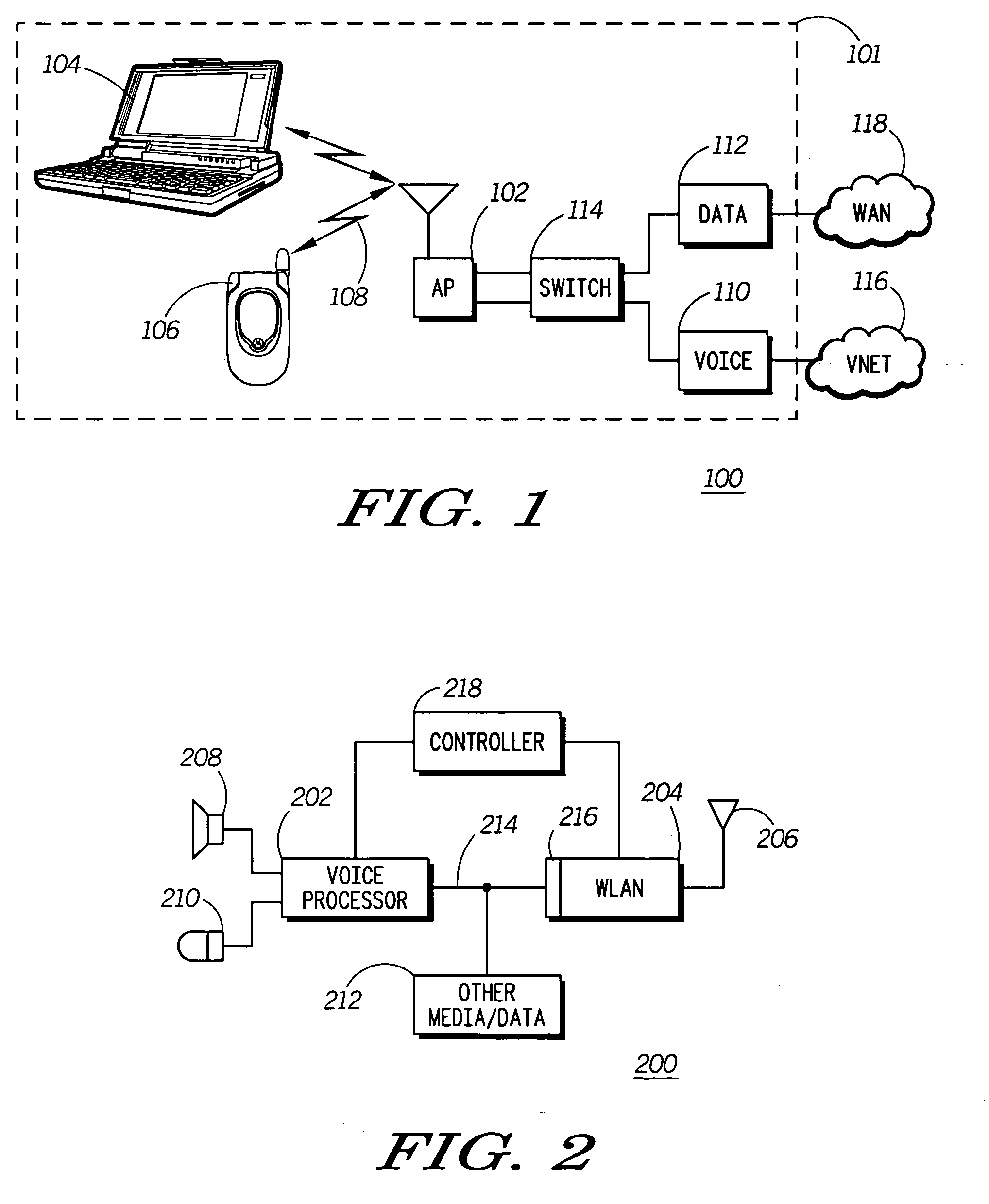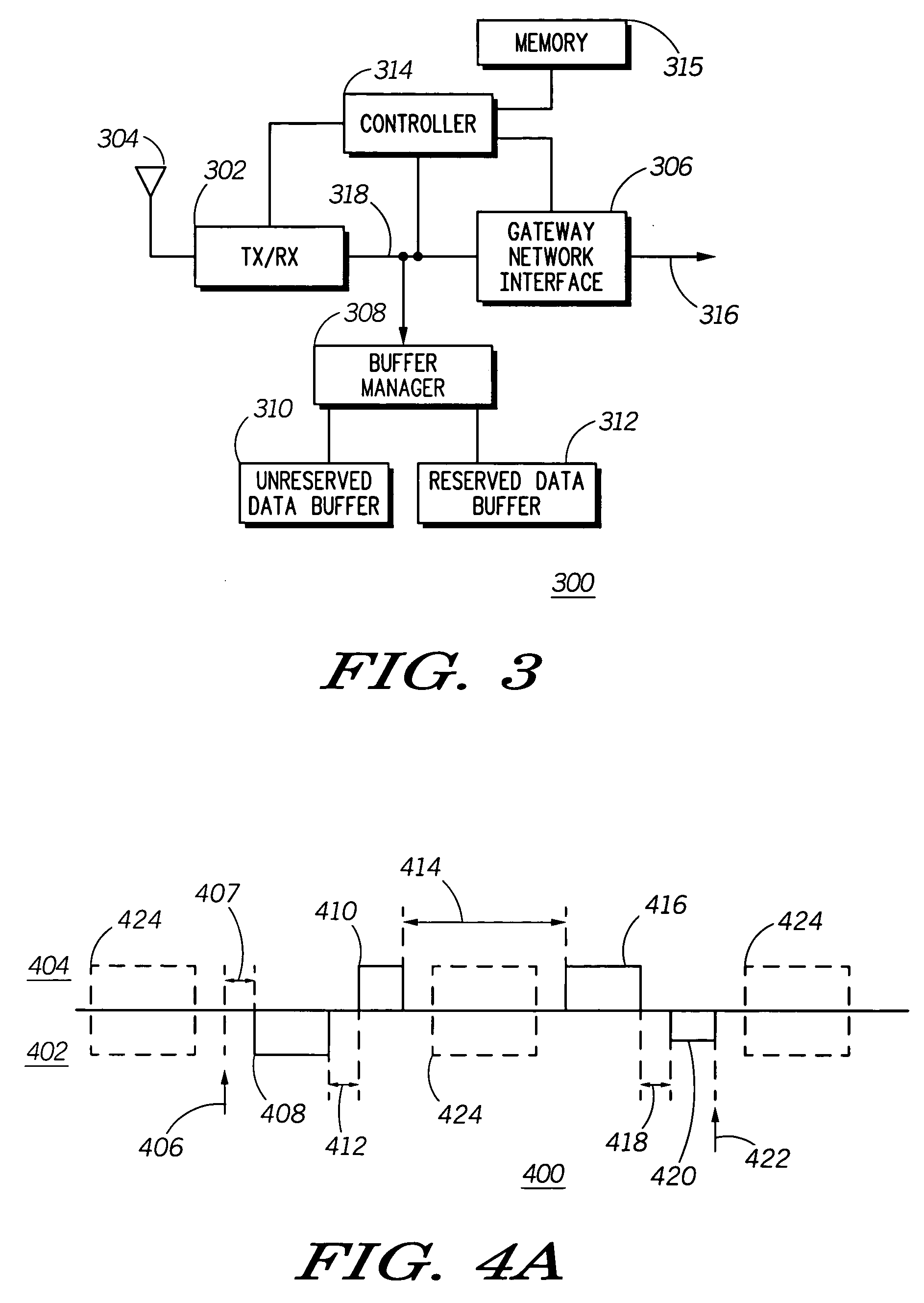Uplink poll-based power save delivery method in a wireless local area network for real time communication
a wireless local area network and power saving technology, applied in the field of power, can solve the problems of inability to provide the power savings required to justify the complexity, the approach can be complex to implement, and the power consumption of handheld devices
- Summary
- Abstract
- Description
- Claims
- Application Information
AI Technical Summary
Problems solved by technology
Method used
Image
Examples
Embodiment Construction
[0027] While the specification concludes with claims defining the features of the invention that are regarded as novel, it is believed that the invention will be better understood from a consideration of the following description in conjunction with the drawing figures, in which like reference numerals are carried forward.
[0028] The invention solves the problems associated with the prior art by providing an uplink poll-based power save delivery (UPPSD) mode of operation in a wireless local area network (WLAN) system which permits a mobile station in power save mode to retrieve frames from an access point without requiring the access point to respond immediately to a polling frame, without requiring the mobile station to poll the access point for each downlink frame, and without requiring the mobile station to transmit a frame to inform the access point of a transition to a low power mode. When the mobile station uses the present UPPSD power save mode, it first establishes a resourc...
PUM
 Login to View More
Login to View More Abstract
Description
Claims
Application Information
 Login to View More
Login to View More - R&D
- Intellectual Property
- Life Sciences
- Materials
- Tech Scout
- Unparalleled Data Quality
- Higher Quality Content
- 60% Fewer Hallucinations
Browse by: Latest US Patents, China's latest patents, Technical Efficacy Thesaurus, Application Domain, Technology Topic, Popular Technical Reports.
© 2025 PatSnap. All rights reserved.Legal|Privacy policy|Modern Slavery Act Transparency Statement|Sitemap|About US| Contact US: help@patsnap.com



